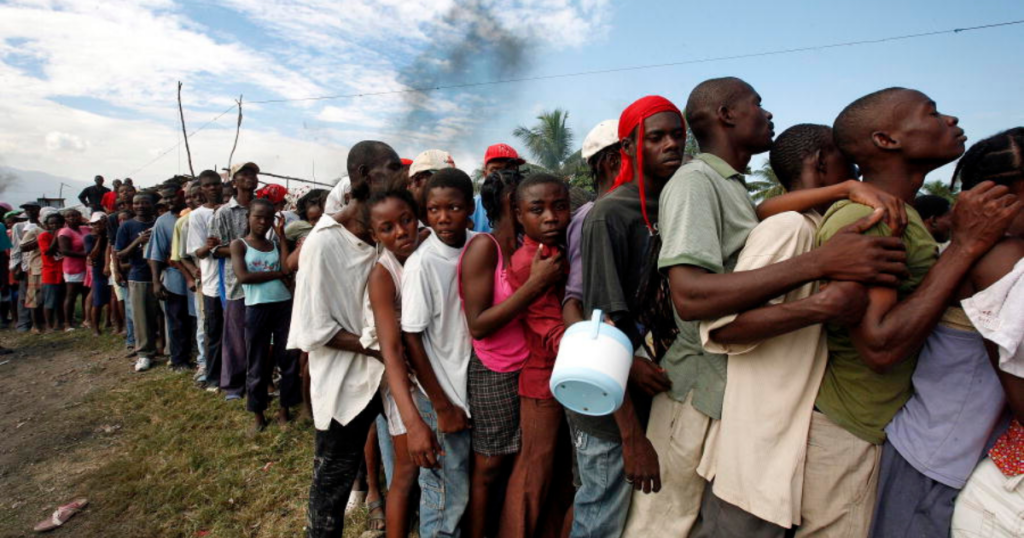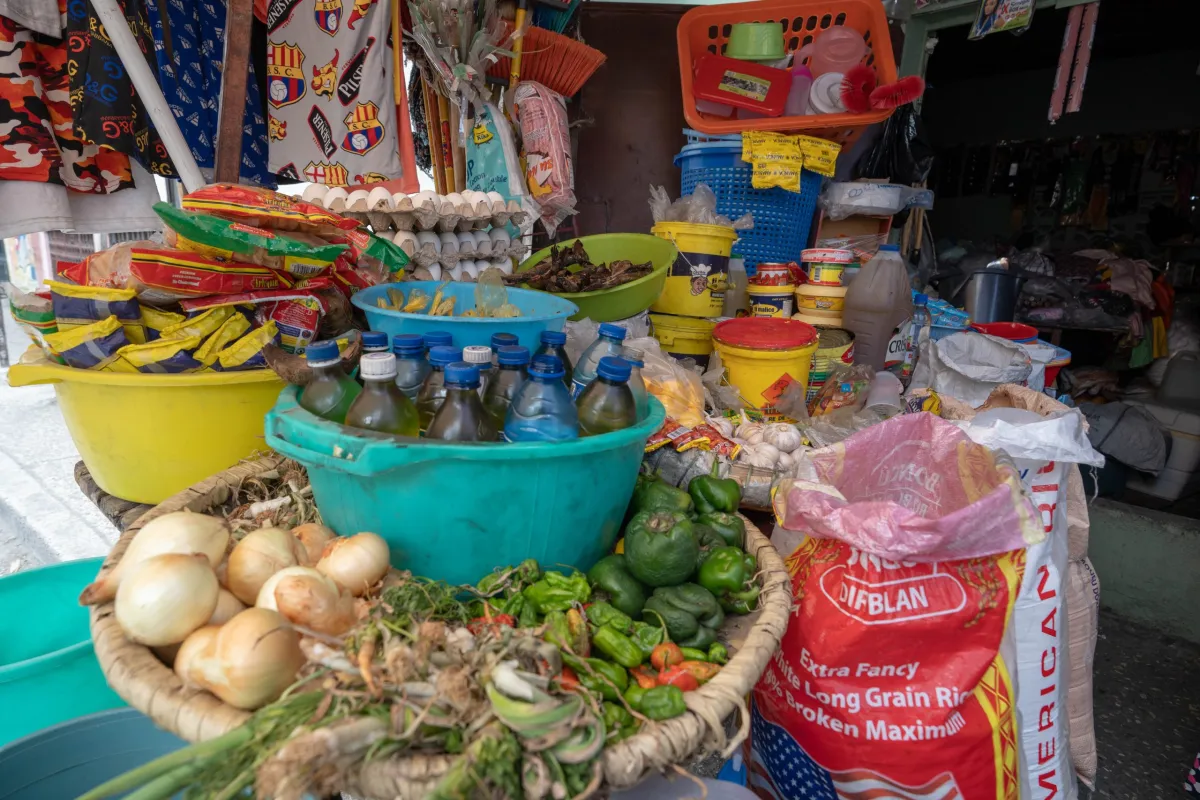
How did it happen? Haiti food crisis explained.
By GO HumanityLimited access to at least one meal a day is causing a phenomenon in Haiti some call ‘grangou kloròks’: hunger so acute it causes stomach pain akin to bleach eating through clothes.
The people of Haiti are dropping unbelievable quotes on the press like “I don’t remember the last time I drank juice,” or “we are already dead.”
What is this all about? Here’s the overview:
Food crisis impacting Haitians across social strata
According to the UN, the country saw food prices increase by an average of 63% in 2022. 4.7 million Haitians are impacted by an “acute food crisis.” 19,200 are estimated to be a step away from famine.
The number of households that experienced hunger due to lack of resources to acquire food has more than doubled, jumping from 32.9% of all Haitian households in 2021 to 71% in 2022.
A toxic stew of causes
The laundry list of causes includes political turmoil, high unemployment, inflation, gas price increases, food supply shortages, fallout from the 2010 and 2021 earthquakes, and skyrocketing crime.
Politically-motivated gang violence is disrupting Haiti’s food supply chain, compounding troubles caused by rising food prices worldwide.

Photo: Haiti Times
Road blockades caused by gang activity mean vendors can’t get locally-produced foods to markets while imported food is stuck at ports. The nearby Dominican Republic has twice declined to export eggs and sugar to Haiti because of a shortage on its side.
Meanwhile, customers’ ability to buy has fallen. Businesses are in decline due to rising costs and lack of customers.
Crime also has an immediate impact on individuals’ access to food. Kidnapping-for-ransom schemes are leaving families without savings. People fleeing gun violence are becoming displaced.
All this has created a slew of disruptions to Haiti’s fragile society and economy.
Embezzlement means relief through government not reliable
Haiti has seen a two-decade democratic decline fueled by expansionist authoritarianism, and a long history of government embezzlement which has brought its public to a boiling point.
Only a sliver of the billions spent after Haiti’s 2010 earthquake was put into the hands of Haiti’s poor majority.

Photo: efe.com
In 2017, it was found that $2bn in oil loans for infrastructure, public health, and other needs were embezzled by the sitting president. That president left office and hand-picked a successor— Jovenel Moïse— who was later found to have received millions of these dollars. Moïse was also paid two separate times for a road rehabilitation project that was never finished.
Nationwide anti-corruption protests broke out against the Moïse government, which were crushed violently by police and allied gangs. Kidnappings, massacres, and political violence gripped the country from 2019-2021. All elections halted, parliament disbanded, and Moïse began appointing mayors and ruling by decree—leading to his assassination in 2021.
The succeeding regime of Ariel Henry has since removed government subsidies on fuel prices, resulting in dramatic hikes in the cost of gas, food and basic necessities.
All these crises have their roots in hundreds of years of US and European intervention in Haiti, including a bloody US/French-orchestrated coup in 2004 and subsequent UN-coordinated occupation.
What can we do?
Until the people of Haiti can hold transparent elections, free themselves from colonial control, and liberate roadways from gangs, reliable aid has to come from within Haitian communities at the lowest levels.
That’s why GO Humanity is fundraising to support two humanist mutual aid causes in southern Haiti. Donations will support the creation of a community garden, help a group build toward a free community restaurant, and to help women organize against gang violence.
Donate via Facebook or GO Humanity’s webpage.
Top Photo: UN

